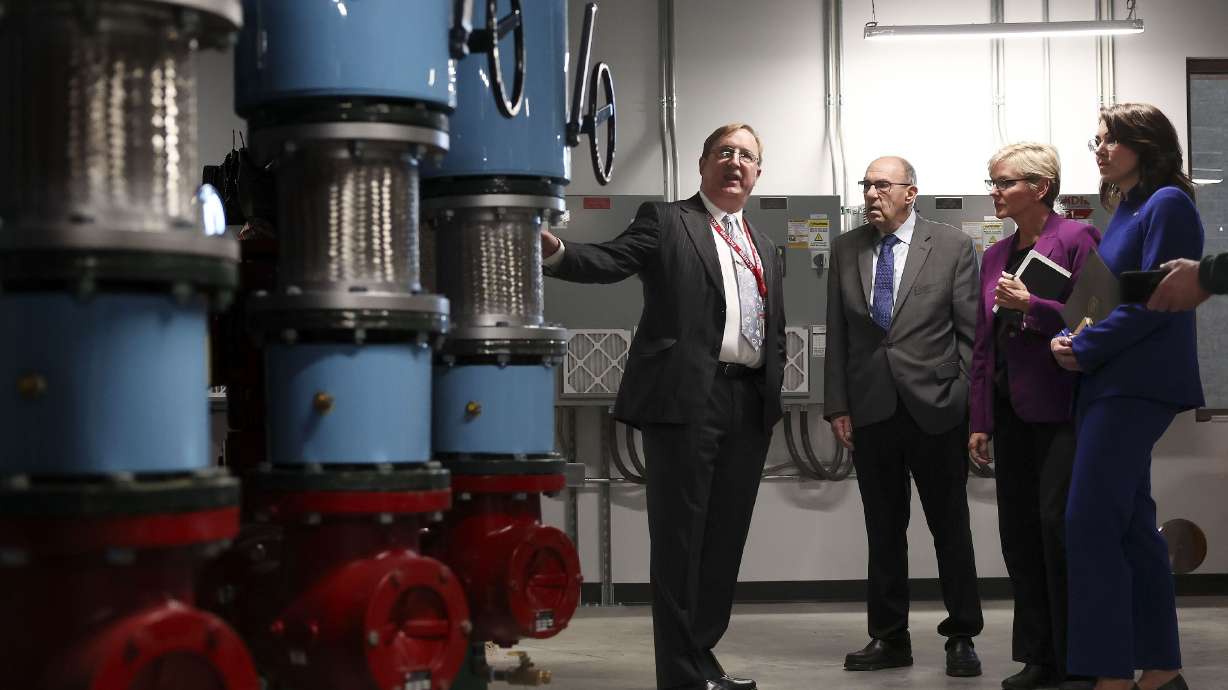Estimated read time: 3-4 minutes
This archived news story is available only for your personal, non-commercial use. Information in the story may be outdated or superseded by additional information. Reading or replaying the story in its archived form does not constitute a republication of the story.
SALT LAKE CITY — Utah's energy portfolio includes the ground under your feet — geothermal — already contributing 6% of the state's energy mix with a University of Utah blueprint and an ambitious project in central Utah underway to make it commercially viable everywhere.
U.S. Energy Secretary Jennifer Granholm was in Salt Lake City for a tour Wednesday that included a look at a unique heat pump system that gets its energy from the ground, saving energy costs of $70,000 a year via 151 wells that go 350 feet underground.
That kind of innovation at the U.'s Carolyn and Kem Gardner Commons building, installed in 2018, is the first of its kind on campus to use the earth as a heating and cooling source. The system also saves carbon emissions and water, about 1.8 million gallons a year, and the equivalent of 378 tons of carbon dioxide, university officials said.
"Utah is so fortunate to have this amazing resource," Granholm said at a press conference. "That being the heat beneath your feet, and it is available anywhere."
The U.S. Department of Energy has thrown its financial muscle at Utah's FORGE project that is being spearheaded by the university's Energy & Geoscience Institute and watched by a lot of countries — Germany, Japan, China, the United Kingdom.
The project in Beaver County involves the drilling of one of two deep, deviated wells that ultimately reach depths of 10,800 feet and are seeking to capture geothermal energy bubbling at 437 degrees.
The enhanced geothermal technology works like a radiator, with the planned injection of water into one well that will then be brought up as steam to power a turbine to turn it into energy.

The Energy & Geoscience Institute, with its site at Milford, beat out five other competitors, including DOE laboratories, for the project.
"This is almost an inexhaustible resource," Granholm said, adding the Utah team is trying to "crack the code" to make it commercially viable.
Utah is third in the nation for its amount of geothermal resources, but Granholm stressed the possibilities are endless for landing a reliable, grid-ready source of energy.
"The potential of geothermal is enormous," she said, with a prediction that at some point, 45% of U.S. homes could be powered by that earthen heat.
She said with just 2% of the resource tapped, U.S. geothermal energy is abundant enough to power the United States 2,000 times over.
"That is the holy grail of clean energy," Granholm said.
The Utah FORGE project is an underground demonstration laboratory with international partners and has already successfully drilled its first well.
On Wednesday during her press conference, Granholm announced $74 million in competitive funding available to Utah and other states for development of geothermal resources and technology.
Utah already produces 59 megawatts of energy from geothermal resources, but a dozen projects are in some stage of development that could produce more emissions-free power generation.
In January, the Bureau of Land Management announced it had leased two parcels in Millard County of 3,045 acres for development of renewable energy, which includes geothermal.









